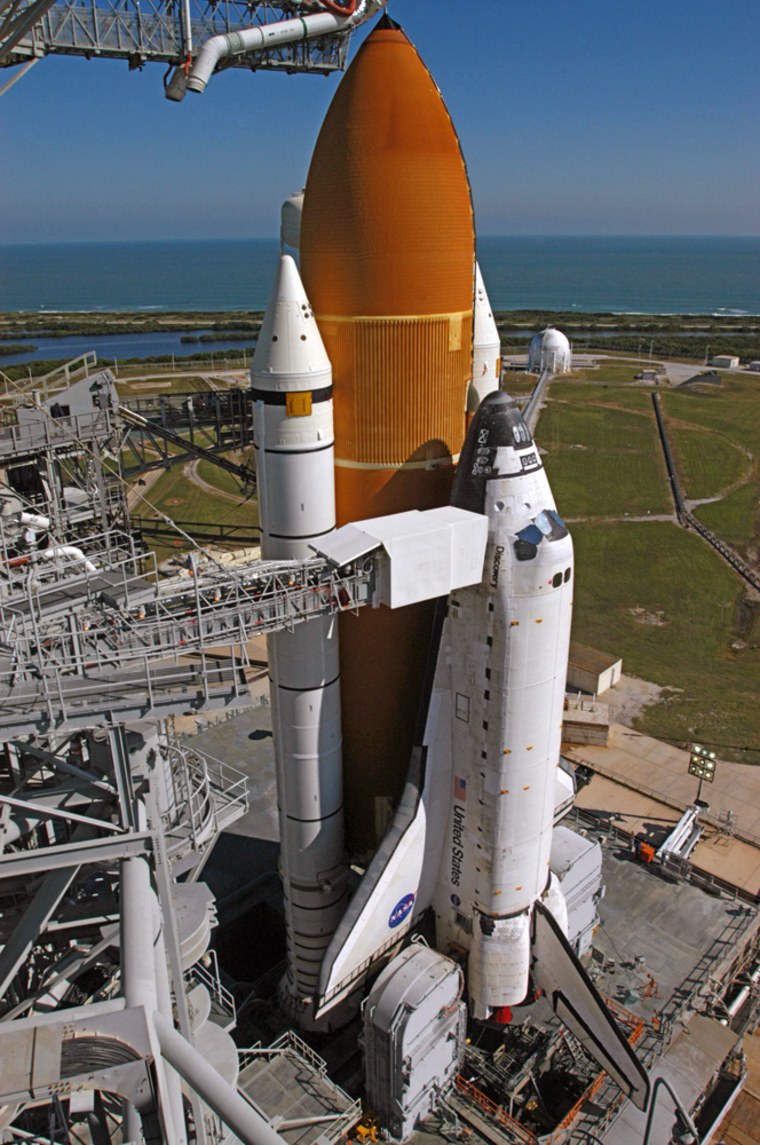NASA managers decided Thursday to wait until 2008 before redesigning the space shuttle’s external fuel tank, the source of the foam problem that caused the Columbia disaster.
NASA spokesman Kyle Herring said the tank’s current design “has proven to be more robust” than initially thought.
After the disaster, engineers refined the process of applying insulating foam to the tank to prevent the situation that doomed Columbia.
During Columbia’s 2003 mission, a piece of foam broke off the tank during liftoff and gashed a wing, allowing hot gases to penetrate the spacecraft during re-entry. The spacecraft disintegrated, killing seven astronauts.
Since then, three flights have launched without foam falling off the tank early enough in the journey to damage the shuttle.
NASA plans to have the redesign ready in early 2008.
The decision comes a week before Discovery is scheduled to make NASA’s first nighttime shuttle launch in four years. The shuttle is supposed to liftoff late on Dec. 7 for a mission to the international space station.
Power unit problem resolved
Also on Thursday, Mission Control resolved a problem with a unit that controls power to an enormous joint that rotates solar arrays at the space station. A circuit breaker opened this week during a software test on the device, which ensures that the panels follow the sun to generate electricity.
Engineers were concerned that the circuit breaker had been tripped, but NASA spokeswoman Lynnette Madison said they determined it had mistakenly been commanded to open. The space station crew was later able to close the circuit breaker. NASA will continue tests to determine the source of the glitch.
